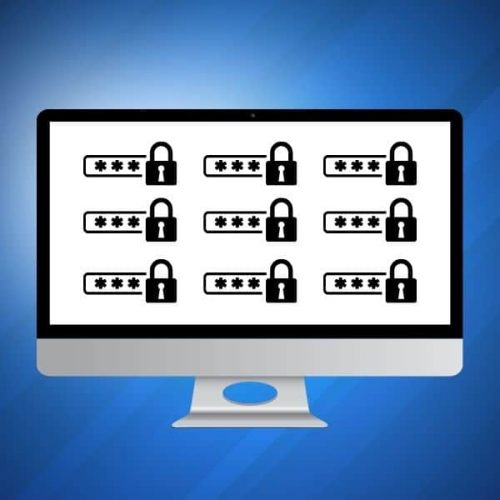Password spraying attacks are an increasingly common cybersecurity threat. However, most people are unaware of what they are, and how they work.
In this guide, we’ll cover everything you need to know about password spraying. We’ll explain how they work, how to detect if you are being attacked, and how to protect yourself in the future.
So without further ado, let’s explore!
Password Spraying Attacks in a Nutshell
Most people are familiar with traditional brute force attacks. This is when a single account is the target of thousands or even millions of password attempts.
On the other hand, password spraying involves trying a few commonly used passwords across many accounts.
This method often avoids detection and presents a significant challenge for both individuals and organizations. The attack exploits the tendency of users to select weak, commonly used passwords.
Let’s explore how these attacks work in more detail.
How Does a Password Spraying Attack Work?
A password spraying attack usually involves the following steps.
Collect a database of usernames
Before launching their password spraying attack, the attackers need to select their victims. This takes the form of a list of usernames (usually email addresses). Usually, this list will be built through various means such as social engineering as well as leaks and breaches available for sale on the dark web.

Hackers can also use scraping, a process of using automated tools to collect large amounts of data from websites. These web scrapers crawl through web pages, forums, social media profiles, etc., and extract a list of all the email addresses they could find.
Build a list of common passwords
In parallel, attackers need to create a list of common passwords such as “123456”, “password” or “qwerty12345789”.
These lists can also be found on the darknet. There is also an entire Wikipedia entry dedicated to the most common passwords. So if you have a password on that list, make sure to change it ASAP.
Launching the attack
Once attackers have a list of usernames and passwords, they can start targeting accounts. Unlike brute-force attacks that repeatedly guess passwords for one account, password spraying targets a large number of accounts, trying just a handful of common passwords on each.
This approach is highly effective because it avoids triggering security systems that lock accounts after multiple failed attempts.
For example, they might decide to target Facebook accounts. For each username in their list, they will try a handful of passwords from their second list. If none work, they move to the next username. If the number of attempts allowed is publically available, they can finetune their attack further. For example, Facebook locks your account after 5 failed attempts. Knowing this, an attacker can limit himself to 4 attempts before moving to the next username.
Of course, this entire process is automated with dedicated tools. The attackers are only alerted once they manage to get into an account.
Password Spraying vs. Other Brute Force Attacks
Password spraying might seem similar to other brute-force attacks at first glance, but key differences distinguish it.
Traditional brute-force attacks bombard a single account with countless password combinations until the correct one is found. This method is “noisy” and easily detected.
Such attacks often result in the targeted account being locked due to multiple failed attempts.
Password spraying, however, takes a quieter, more calculated approach. It is often considered a “low-and-slow” tactic. Instead of relying on computation power, password spraying relies on human tendencies to choose weak passwords and reuse them across accounts.
Another important distinction lies in the targets. Brute-force attacks usually focus on high-value accounts, such as those of administrators or executives. In contrast, password spraying often targets a broader range of accounts, increasing the likelihood of compromising at least one.
How to Detect if You Are a Victim
Detecting a password spraying attack can be tricky due to its stealthy nature. However, there are several signs that might indicate an ongoing or successful attack.
- Unusual Login Attempts: A sudden spike in login attempts across multiple accounts, especially from unfamiliar IP addresses or locations, is a common indicator of a password spraying attack. If you notice an increase in failed login attempts, particularly those involving common passwords, it could suggest an attack.
- Account Lockouts: Although attackers try to avoid triggering lockouts, a poorly executed attack might still cause multiple accounts to be locked out simultaneously. If this happens, it could be a sign of a password spraying attempt.
- Access Logs: Reviewing access logs for irregular patterns, such as multiple login attempts from the same IP address targeting different accounts, can help in detecting a password spraying attack. Look for deviations from normal login behavior, particularly during odd hours or from unexpected regions.
- Security Alerts: Many modern security tools can detect anomalies linked to password spraying. Facebook and Google regularly alert you if they notice a login that looks suspicious.

How Can I Protect Myself in the Future?
So far, we’ve laid a pretty scary picture of password spraying attacks. However, there are several steps you can take to prevent falling prey to these tactics.
Adopt strong, unpredictable passwords
This is THE most effective defense against a password spraying attack. Use long, complex passwords that avoid common words or easily guessable patterns. Mixing letters, numbers, and special characters can make your passwords significantly harder to crack. For more tips, check out our ultimate password guide.
Use a password manager
Remembering long, complex, and unique passwords is impossible for pretty much anyone. You can use passphrases, which helps with remembering them. But even then, you’ll still have to remember dozens of them.
This is why we recommend you use a password manager. Many types exist, each with its tradeoffs, so make sure to do your research before picking one.
Enable multi-factor authentication (MFA)
MFA (often simply called 2FA) requires more than just a password for access. It’s a second layer of security where you are requested to enter a one-time password (OTP) after your main password. Even if an attacker guesses your password, they would still need the second code to get access to your account.
Regularly monitor and audit accounts
Keep a close eye on your accounts and logs for any unusual activity. Setting up alerts for multiple failed login attempts or logins from unexpected locations can help you spot potential attacks early.
Likewise, if you get an alert about a suspicious login, take it seriously and review it.
Educate users about password spraying and security practices
It’s crucial to make sure that everyone in your organization understands the importance of strong, unique passwords. Regular training sessions can reinforce good habits and keep security top of mind.
Secure Administrative Accounts
Accounts with administrative privileges are often the primary targets of password spraying attacks. Make sure these accounts are secured with the highest level of protection, including the use of MFA and regular audits.
Looking to password-protect a Google Drive folder? Check out our guide here.
Conclusion on Password Spraying
That’s a wrap for this guide on password spraying. Hopefully, you found it useful and will be able to implement some of these preventive measures.
Securing your online life starts with a private and secure email provider. Here at Mailfence, we’ve put privacy and security at the center of everything we do, including our email solution, calendar, online storage, and more.
If you’re ready to take your next step in your privacy journey, create your free account today – no strings attached! And if you have any questions, feel free to reach out to us at support@mailfence.com
FAQs: Password Spraying Attacks
A password spraying attack is a type of brute-force attack where hackers try commonly used passwords across multiple accounts, instead of repeatedly targeting a single account.
Unlike brute-force attacks that target one account with many password attempts, password spraying tries a few common passwords across many accounts. This helps attackers avoid detection and account lockouts.
You can identify password spraying through unusual login attempts, unexpected account lockouts, or alerts about suspicious activity. Monitoring access logs for irregular login patterns can also help spot these attacks.
To defend against password spraying, use strong and unique passwords, enable multi-factor authentication (MFA), and regularly monitor your accounts for suspicious activity. A password manager can help you maintain complex, secure passwords.




